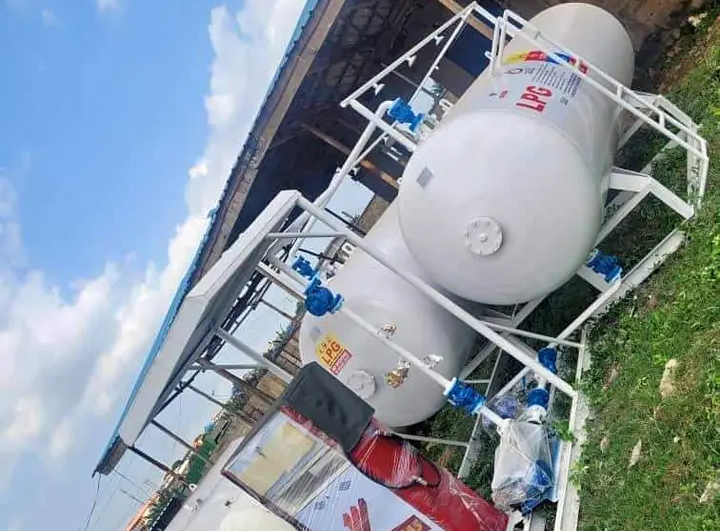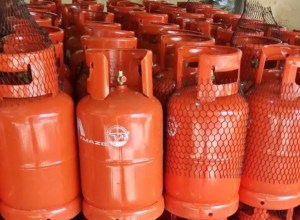LPG, or liquefied petroleum gas, is a commonly used fuel in various industries and households. It is a versatile energy source that can be easily stored and transported. While LPG gas has many applications, one area where it is extensively used is in air conditioning and refrigeration systems.
In air conditioning systems, LPG gas is often used as a refrigerant. It plays a crucial role in the cooling process by absorbing heat from the surroundings and transferring it outside. This allows the air conditioner to maintain a comfortable indoor temperature. LPG gas, with its high heat absorption capacity, is an efficient refrigerant choice for such systems.
Similarly, in refrigeration systems, LPG gas is used as a refrigerant to create a cooling effect. It circulates through the system, absorbing heat from the surroundings and keeping perishable items, such as food and medicines, at low temperatures.
While LPG gas offers advantages in air conditioning and refrigeration systems, it is important to be aware of the potential risks associated with its use. Due to its flammable nature, LPG gas poses certain safety hazards that need to be carefully managed. Leakage of LPG gas can lead to fire or explosions, endangering lives and causing significant damage to property.
Therefore, it is essential to ensure proper installation, maintenance, and monitoring of LPG gas systems in air conditioning and refrigeration units. Regular inspections, leak detection mechanisms, and adherence to safety regulations are crucial to minimize the risks and ensure the safe operation of these systems.
The risk associated with LPG usage
Understanding the risks associated with LPG gas in air conditioning and refrigeration systems is crucial for the safety of both individuals and property. LPG, or liquefied petroleum gas, is commonly used as a fuel source in many industries, including residential and commercial cooling systems. While LPG is an efficient and cost-effective option, it does come with inherent dangers that need to be addressed.
One of the main risks of using LPG gas in air conditioning and refrigeration systems is the potential for leaks. LPG is highly flammable, and even a small leak can lead to a hazardous situation. The gas is heavier than air, which means it can accumulate in low-lying areas, increasing the risk of ignition. Additionally, LPG is odorless and colorless, making it difficult to detect leaks without proper monitoring equipment.
Another risk associated with LPG gas is the possibility of explosion. If the gas is released in an enclosed space and comes into contact with an ignition source, such as a spark or open flame, it can cause a violent explosion with devastating consequences. This is why it is crucial to have proper ventilation systems in place and to ensure that all equipment and connections are regularly inspected for any signs of damage or wear.
In addition to explosion risks, LPG gas can also pose health hazards if inhaled. Exposure to high concentrations of LPG can lead to symptoms such as dizziness, nausea, headaches, and even loss of consciousness. Prolonged exposure can have more severe health effects, including respiratory problems and organ damage. Proper ventilation and adherence to safety protocols are vital to minimize the risk of these health hazards.
To mitigate these risks, it is essential to follow strict safety guidelines when handling and using LPG gas in air conditioning and refrigeration systems. This includes regular maintenance and inspection of equipment, proper installation of gas lines and connections, and training for employees on how to identify and respond to potential gas leaks or emergencies.
The dangers of improper installation and maintenance of LPG gas systems
When it comes to LPG gas systems, proper installation and maintenance are of utmost importance to ensure the safety of your air conditioning and refrigeration units. Improper installation can lead to a range of dangers that can pose risks to both property and human life.
One of the main dangers of improper installation is gas leaks. If the system is not installed correctly, there is a higher chance of gas leakage, which can be highly flammable and combustible. Gas leaks not only increase the risk of fire but also expose occupants to harmful fumes, such as carbon monoxide, which can be life-threatening if inhaled in large quantities.
Furthermore, improper maintenance of LPG gas systems can lead to potential hazards. Regular maintenance checks are crucial to identify any leaks, faulty connections, or worn-out components. Neglecting maintenance can result in gas leaks going unnoticed, putting occupants at risk without their knowledge.
Another danger associated with improper installation and maintenance is the risk of explosions. If the gas system is not installed following proper guidelines or if maintenance is neglected, the accumulation of gas can lead to an explosion when triggered by a spark or open flame. This can cause severe damage to the property and pose a serious threat to the safety of individuals nearby.
Tips for safe handling and storage of LPG gas in air conditioning and refrigeration setups
When it comes to air conditioning and refrigeration setups, the safe handling and storage of LPG gas is of utmost importance. LPG, or liquefied petroleum gas, is commonly used in these systems for its efficiency and cost-effectiveness. However, if not handled properly, LPG gas can pose serious risks and dangers.
To ensure the safety of your air conditioning and refrigeration setup, here are some important tips for the safe handling and storage of LPG gas:
1. Ventilation: Proper ventilation is crucial when dealing with LPG gas. Make sure that the area where the gas is stored is well-ventilated to prevent the accumulation of gas and minimize the risk of leaks.
2. Storage Location: Choose a safe and designated storage location for your LPG gas cylinders. The storage area should be away from any ignition sources, such as electrical equipment or open flames. Also, ensure that the storage area is secure and inaccessible to unauthorized individuals.
3. Handling and Transport: When handling LPG gas cylinders, always exercise caution. Use proper lifting techniques to avoid accidents or injuries. During transport, secure the cylinders in an upright position to prevent any damage that could potentially lead to leaks.
4. Regular Inspections: Regularly inspect the LPG gas cylinders for any signs of damage, such as dents, rust, or corrosion. If you notice any issues, replace the cylinder immediately to prevent any potential leaks or accidents.
5. Leak Detection: Install a gas leak detection system in your air conditioning and refrigeration setup. This will help you detect any leaks promptly and take immediate action to prevent any potential risks or hazards.
6. Training and Education: Ensure that all personnel involved in handling LPG gas are properly trained on safe handling procedures and emergency protocols. This will help minimize the risks associated with LPG gas and ensure that everyone is prepared to respond in case of an emergency.
Case studies and real-life incidents highlighting the dangers of LPG gas in these systems
To truly understand the risks associated with LPG gas in air conditioning and refrigeration systems, it’s important to examine real-life incidents and case studies that highlight these dangers. These examples serve as a stark reminder of the potential hazards that can arise when proper precautions are not taken.
One such case study involves a commercial building that experienced a sudden and catastrophic refrigerant leak due to a faulty LPG gas line. The leak went undetected for an extended period, leading to the accumulation of a significant amount of gas in the enclosed space. Tragically, a spark ignited the gas, resulting in a devastating explosion that caused extensive damage to the building and serious injuries to those present.
In another incident, a residential air conditioning unit malfunctioned due to an LPG gas leak. The homeowners were unaware of the issue until they started experiencing symptoms of carbon monoxide poisoning. It was later discovered that the leak had been slowly releasing gas into their living space, posing a potentially lethal threat.
These real-life incidents underscore the importance of regular maintenance and inspection of air conditioning and refrigeration systems, especially when LPG gas is involved. It is crucial for both residential and commercial property owners to be aware of the potential risks and take proactive measures to prevent such incidents from occurring.
By sharing these case studies and real-life examples, we hope to raise awareness about the hidden dangers that LPG gas can pose in air conditioning and refrigeration systems. It is essential for individuals and businesses to prioritize safety by adhering to proper installation, maintenance, and monitoring practices to mitigate the risks associated with LPG gas usage in these systems.
In conclusion, it’s crucial to be aware of the hidden dangers that LPG gas can pose to air conditioning and refrigeration systems. From potential leaks and explosions to the adverse effects on the environment, understanding the risks associated with LPG gas is essential for maintaining the safety and efficiency of your appliances. By following proper installation, maintenance, and safety protocols, you can mitigate these risks and ensure the longevity of your equipment while prioritizing the well-being of your home or business. Stay informed, stay safe, and make informed decisions when it comes to LPG gas and its impact on your cooling systems.


